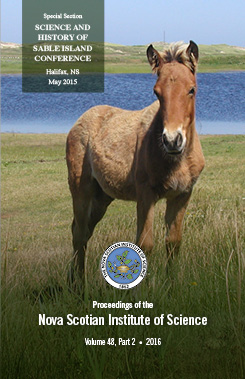Restoration of a Nova Scotia stream to enhance Atlantic salmon provides few benefits to benthic invertebrates
DOI:
https://doi.org/10.15273/pnsis.v48i2.6656Abstract
Stream restoration is often undertaken with the goal of improving habitat for one focal species, most often a salmonid fish such as trout or salmon. Improvements in channel structure, especially the flushing of silt from sediments, should also benefit benthic invertebrate communities, but studies to date suggest substantial changes in benthic communities following restoration are not common. In a third-order Nova Scotia stream, we examined the effect of successful restoration to improve habitat for spawning Atlantic salmon on benthic invertebrate communities at sites where clogging of the bottom cobble with fine silt had been alleviated.
In a long-term comparison of two restored sites and two degraded sites, only six of 24 insect taxa showed increased population density five or seven years after restoration. In a second comparison of a comparatively undisturbed site against a newly restored site and a site restored eight years earlier, only three invertebrate taxa appeared to respond positively and consistently to restoration. In both studies there were no substantial changes in total invertebrate density, taxa richness, Simpson‘s diversity index or other community metrics over five years, except for a decline in the EPT/Chironomids ratio in the second study. Ordination of sites by correspondence analysis showed that, in both studies, benthic communities at unrestored control sites and restored sites were clearly different and did not become more similar through time. A long-term restructuring of the benthic community in the entire brook is suggested by the appearance of silt-intolerant shredders (Lepidostoma, Leuctra) among the most abundant members of the benthos in the second study, replacing silt-tolerant collectors (Tricorythodes, Optioservus) that dominated the earlier study.
Habitat factors unaffected by in-stream restoration (frequent high discharge, lack of woody debris) limit benthic communities more than substratum quality.


